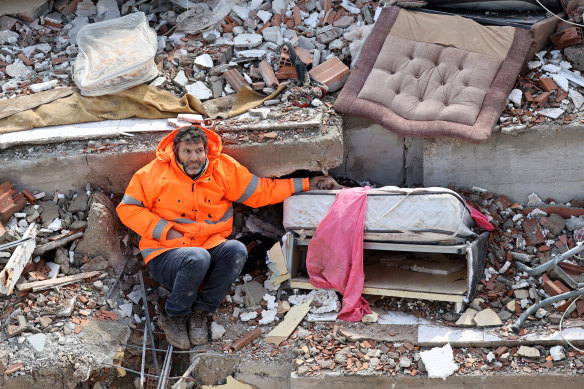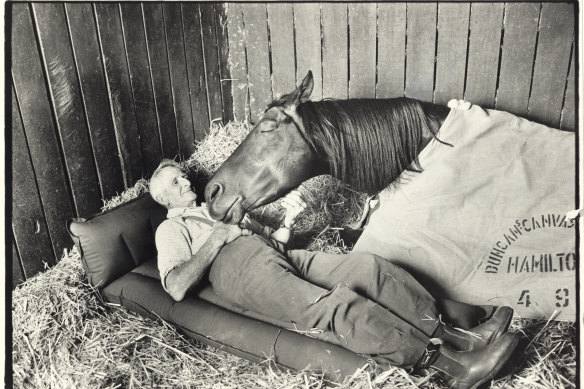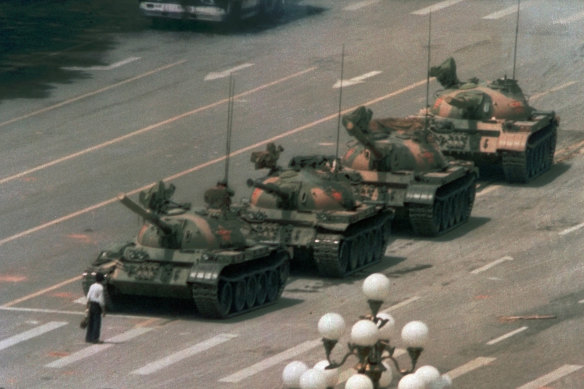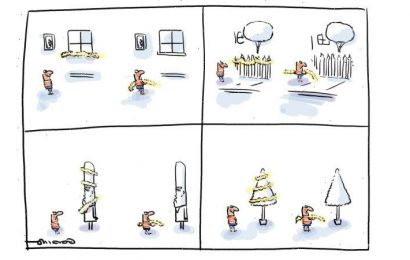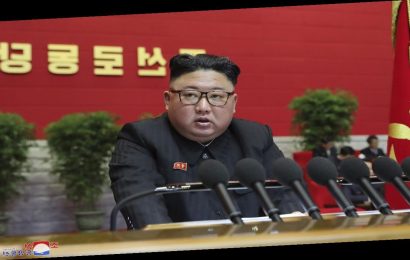Sometimes a complex story is best told with a single image.
On Wednesday, a photo came to us from Turkey that proved this point. It showed a man sitting on a mound of rubble holding the lifeless hand of his daughter. She had been trapped in a building collapse following the earthquakes that have caused immeasurable devastation across Syria and Turkey. The man’s expression, to me, appeared to be one of angry determination, rather than anguish. I’m not sure how long he had been sitting there, in the cold, but he didn’t look like he was going anywhere.
Mesut Hancer holds the hand of his 15-year-old daughter Irmak, who died in the earthquake in Kahramanmaras, close to the quake’s epicentre.Credit:AFP
I find it difficult to remain composed while thinking about that image, even as I write this note.
This was one of those images that captures the emotional gravity of a situation and transplants that feeling directly into the mind of the viewer. Such images immediately inspire empathy – a quality that too often fades the further the recipient is from the source.
There have been a few like this in recent years. In 2015, another famous photo out of Turkey jolted much of the world out of its apathy to the Syrian refugee crisis. A series of images showed a soldier sensitively carrying away the body of a boy who had washed up on the beach. His black velcro shoes done up. Shorts and t-shirt still in place.
Often memorable photos confront us with tragedy, but not always. Sometimes it’s joy and mischief: former Age photographer Bruce Postle’s playful photo of the racehorse Reckless and his legendary trainer Tommy Woodcock is a great example.
Tommy Woodcock and Reckless.Credit:Bruce Postle
They can reflect cultural identity, such as Max Dupain’s Sunbaker, which as we reported this week, has been recreated with Chilli Heeler (Bluey’s mum) for the cover of In Style magazine.
They can also visualise moments of great change, as with Mervyn Bishop’s 1975 photo of Gough Whitlam pouring sand into the hand of Vincent Lingiari.
Defiance is another common theme in many of the greatest photos of all time. Think of the famous “tank man” of Tiananmen Square and the “burning monk” of Saigon.
A Chinese man stands alone to block a line of tanks in Tiananmen Square in 1989.Credit:AP
At The Age we often have heated discussions during news conferences about which photos to promote on our homepage and newspaper. We consider their impact, their news value, their artistry. It is rare that we all agree. But on Wednesday, with the bereaved man in the rubble, there was unanimity.
It is a privilege to have access to some of the world’s best photography through a range of services The Age supports. We also have intrepid correspondents such as Kate Geraghty, who has done incredible work for us in Ukraine, Syria and elsewhere. In Canberra, we benefit from the genius of Alex Ellinghausen who is in my view Australia’s greatest political photographer. And our photographers’ coverage of floods, bushfires and other events around the country are often seen across the world.
In Melbourne, we are extraordinarily lucky to have our own clique of talented photographers who every day connect with our readers by not only complementing the written stories we publish, but also telling their own profound stories through photography.
Let me introduce you to a few of them.
Simon Schluter is a master of portraits. His work shows people for who they are, not just what they look like, which is a rare talent.
Jason South is our action man. Nothing will stop him getting the image he needs. His work during the recent floods in northern Victoria was astounding.
Eddie Jim is our Doctor Dolittle. He has a way with animals (except bees perhaps – it’s a long story for another time) and a command of light that can at times make you feel like you’re inside the photo you’re looking at. His sport photos are brilliant too, as seen in his coverage of the Australian Open last month.
Justin McManus is an award-winning machine. Indigenous affairs is his passion and he takes incredible landscapes, but he is also as versatile as any photographer I’ve seen.
Joe Armao is the Inspector Gadget of The Age’s photo team. If you need to get a camera to a difficult perspective, Joe will have a device to do it. He also has a soft spot for families and children and can capture those emotional bonds as well as anyone.
Led by our picture editors Danie Sprague, Paul Rovere, April Lombardo, Rebecca Hallas and Luke Hemer, these photographers and the freelancers who support them consistently produce stellar work.
I want to remind you that by subscribing to The Age you are enabling the work of these highly skilled operators and – by extension – a lot of particularly important photographic work overseas.
So next time you are browsing our homepage or flicking through the pages of our newspaper, please take a closer look at the stories our photographers are telling. They can be every bit as important as the words we write. Thank you for supporting their work.
Patrick Elligett sends an exclusive newsletter to subscribers each week. Sign up to receive his Note from the Editor.
Most Viewed in National
From our partners
Source: Read Full Article
